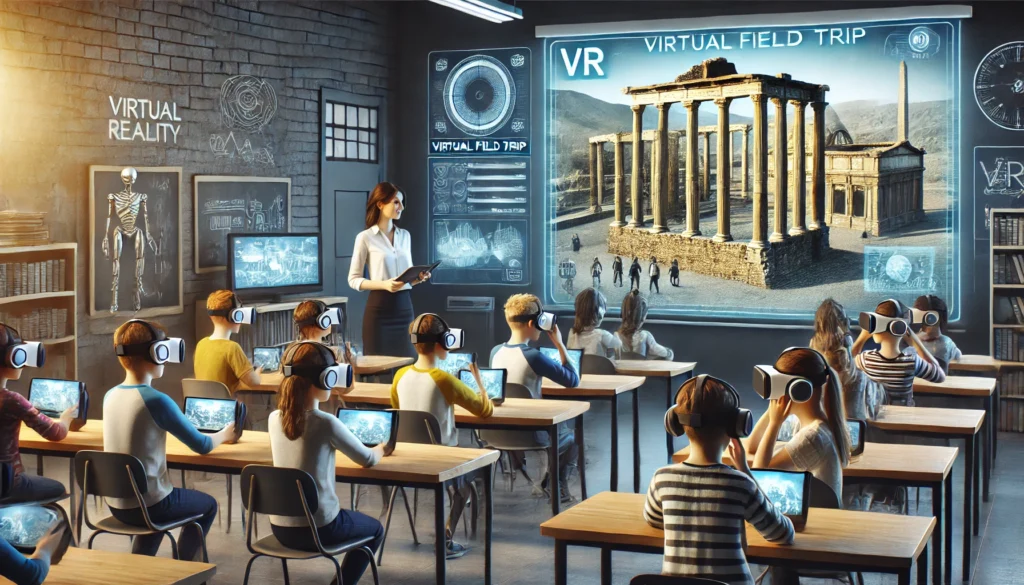The Virtual Field Trip: How Educational VR Headsets are Transforming Field Studies and Project-Based Learning
The tool of the 21st century, Virtual Reality (VR) technology, has revolutionized the way students learn and engage with educational content. One of the most exciting applications of educational VR is in the field of field studies and project-based learning. In this article, we’ll explore how immersive VR field trips are transforming the way students learn and the benefits they bring to the learning process.
What is a Virtual Field Trip?
A virtual field trip, also known as a virtual field study, is an immersive experience that allows students to explore places, environments, and cultures from the comfort of their own classrooms. Using VR headsets, students can inhabit new environments, interact with virtual objects, and see, hear, and experience things that would be impossible or impractical to replicate in a traditional classroom setting.
Benefits of Virtual Field Trips
- Increased Engagement: Virtual field trips are an effective way to increase student engagement and motivation. By bringing the learning experience to the students, VR headsets can simulate the thrill of exploration and adventure, leading to a more interactive and immersive learning experience.
- Cost-Effective: Virtual field trips can be a cost-effective alternative to traditional field trips, which can be expensive and logistically challenging to organize. VR headsets allow students to explore places globally without the need for travel or equipment rental fees.
- Accessibility: Virtual field trips can be easily shared with a wider audience, including students with disabilities, those who are self-isolated, or those who cannot travel due to financial or geographical constraints.
- Personalized Learning: VR headsets can be programmed to cater to individual learning needs, allowing teachers to tailor the experience to suit the needs of their students.
- Real-World Learning Applications: VR field trips can directly connect classroom learning to real-world applications, providing students with a deeper understanding of complex concepts and abstract ideas.
Examples of Successful Virtual Field Trips
- Ancient Rome: Students can explore the Colosseum, Roman Forum, and Pantheon, getting up close and personal with ancient artifacts and structures.
- The Art Museum: Students can explore world-renowned art museums, such as the Louvre or the Met, without the need for travel.
- National Parks: Students can explore national parks, hiking trails, and wildlife reserves, becoming familiar with diverse ecosystems and wildlife.
- Culinary Cuisines: Students can explore global cuisines, ingredients, and cooking techniques, developing an appreciation for diverse culinary traditions.
Best Practices for Implementing Virtual Field Trips
- Integration with Curriculum: Ensure the virtual field trip aligns with existing curriculum goals and learning objectives.
- Clear Objectives: Clearly define learning objectives and outcomes for the virtual field trip.
- Pre- and Post-Activity Support: Provide support for students before and after the virtual field trip, including pre-activity preparation and post-activity reflection.
- Teacher Training: Ensure teachers are trained on using VR headsets and facilitating virtual field trips.
- Assessment and Evaluation: Assess student understanding and knowledge gains through traditional assessment methods, such as quizzes and written assignments.
Conclusion
Virtual field trips have the potential to revolutionize the way we approach field studies and project-based learning. By providing an immersive, engaging, and accessible way to explore new environments and experiences, educational VR headsets can enhance student learning outcomes, increase engagement, and foster a deeper appreciation for diverse cultures and subjects. As VR technology continues to evolve, it’s likely that virtual field trips will become an integral part of 21st-century education, offering students a more immersive, interactive, and effective learning experience.
